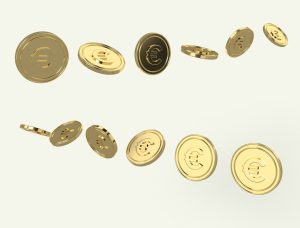When it comes to trading currency, there are two primary options available to traders: forex and futures. Both options have their pros and cons, but the question that arises is which is cheaper? To answer this question, we must first understand the basic differences between forex and futures trading.
Forex:
Forex, also known as foreign exchange trading, is the buying and selling of currency pairs. Forex trading occurs in a decentralized market, and traders can access the market 24 hours a day, five days a week. The forex market is the most liquid market in the world, with an average daily trading volume of over $5 trillion.
Futures:
Futures trading, on the other hand, involves buying and selling currency contracts in a standardized and regulated market. Unlike forex, futures trading occurs in a centralized exchange, and the trading hours are limited to specific times.
Now that we have a basic understanding of the two options, let’s compare the costs involved in each.
Transaction costs:
Transaction costs refer to the fees and commissions that traders pay to execute trades. In forex trading, transaction costs are relatively low, and traders can access the market with a small initial investment. Forex brokers typically charge a spread, which is the difference between the bid and ask price. The spread can vary depending on the broker, but it is usually small, starting from 0.1 pips.
In futures trading, transaction costs are higher than forex trading. Traders have to pay a commission to the broker and also a clearing fee to the exchange. The commission can vary depending on the broker, but it is usually a fixed amount per contract. The clearing fee is a fee charged by the exchange, and it is usually a small percentage of the contract value.
Leverage:
Leverage is the amount of money that traders can borrow from the broker to increase their trading position. Forex trading offers high leverage, with some brokers offering up to 500:1 leverage. This means that traders can control a large position with a small amount of capital. However, high leverage can also lead to significant losses if the market moves against the trader.
Futures trading also offers leverage, but it is typically lower than forex trading. The leverage offered by the exchange depends on the contract and can range from 2:1 to 50:1. This means that traders can control a larger position than their initial investment, but the leverage is not as high as in forex trading.
Margins:
Margins refer to the amount of money that traders need to have in their account to open and maintain a position. In forex trading, margins are low, and traders can open a position with a small amount of capital. The margin requirement varies depending on the broker, but it is usually between 1% to 5% of the contract value.
In futures trading, margins are higher than forex trading. The margin requirement depends on the contract and can range from 2% to 10% of the contract value. This means that traders need to have a larger amount of capital to open and maintain a position in futures trading.
Conclusion:
In conclusion, both forex and futures trading have their pros and cons when it comes to costs. Forex trading offers lower transaction costs, higher leverage, and lower margins, making it a cheaper option for traders. On the other hand, futures trading offers more regulation, lower volatility, and a centralized exchange, making it a safer option for traders. Ultimately, the choice between forex and futures trading depends on the trader’s individual preferences and risk tolerance.





